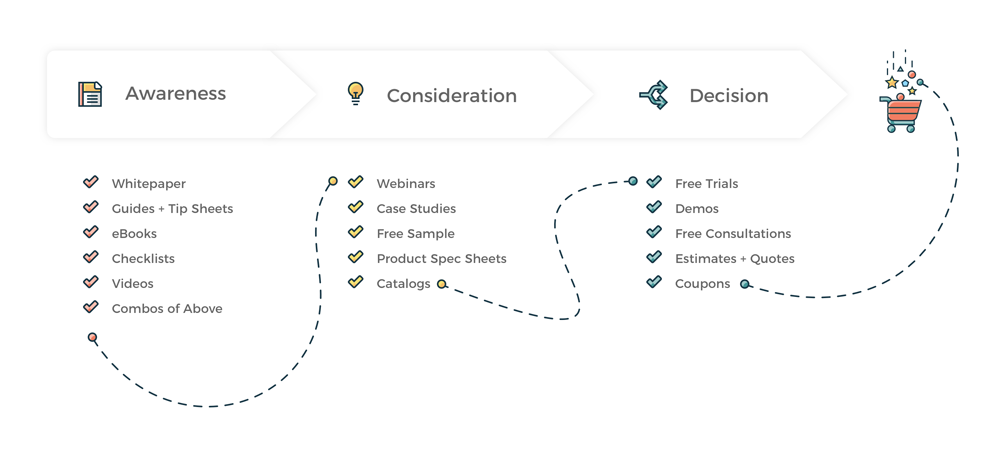
There’s no denying that the Internet has made the world move faster. Technology evolves at an amazing rate and changes the way consumers buy and businesses sell. This rapid pace of development also has an impact on the lifespan of your website. In essence, a website is always a work in progress—a living, breathing entity that needs to be updated regularly so that it is fresh and engaging. You don’t need to redesign your website every year, but you should certainly be giving it a close annual exam to make sure it is leveraging current technologies for your business.
There’s also no denying that it is a true investment to regularly change and update your website. As with any marketing initiative you need to be able to show the value and return on this expenditure. Analytics and digital marketing reports make that ROI measurement easier than ever before.
There’s also no denying that it is a true investment to regularly change and update your website. As with any marketing initiative you need to be able to show the value and return on this expenditure. Analytics and digital marketing reports make that ROI measurement easier than ever before.
This article is part of the Complete Guide to Planning a Success Website Redesign Project.
Bottom line: If you want to stay competitive, your annual budget needs a line item for digital marketing that includes website updates.
Consumer’s buying habits have changed.
B-to-B buyers are beginning to act more like consumers every day—and 80% of consumers are online shoppers (Pew Research Center). What does this mean to you? It means your prospects are researching online before they purchase. They are comparing services, prices, and expertise across websites. They are engaging with you and your competition online to ask questions and learn more before buying. All of these behaviors are opportunities for you to stand out and help them as they move through the buyer journey, looking for the best solution.
Build your website with this buyer’s journey in mind, and you’ll have a natural path to demonstrate your website’s return on investment (ROI).
ROI measurement
ROI measurement #1: Increase sales
- % visitors moved to leads
- Landing page conversion rates
- % leads moved to customers
- # of current customers subscribed to blog/email
Questions to ask about your analytics
- Are you converting most of your visitors into contacts and customers? That’s great! This signals that your next step should be doing what you can with digital marketing and website to get more visitors.
- Are you attracting visitors but not converting them into contacts? It’s good that you have visitors, and moving forward it will be important to figure out why you aren’t capturing them. Work with your digital marketing partner to focus efforts on converting leads into contacts.
- Are you capturing contacts but not turning them into customers? Evaluate what is being communicated online that might be misleading. Then, evaluate the quality of your leads to learn which leads are strongest. Take steps to attract more of the right type of visitors and you’ll be able to convert more of them to customers.
If you are currently getting 1,000 visitors and 50 are turning into contacts, and 5 of those become customers, you can make some calculations. For example, if you were to change that to 2,000 visitors, you could see the other numbers grow based on volume.
ROI measurement #2: Save time
Your website is an excellent tool, and it should be considered another member of your sales and marketing team. (One that works 24/7!) Your website is more than a cool branding exercise. It is a companion to your prospects at every stage of their buyer’s journey.- Increase your prospects’ awareness by educating them on the needs and benefits of your service. There are many ways to do this and many of them can help warm the lead for sales, reducing the time to sale.
- Help your prospects consider your product with more in-depth information found in buyer’s guides or case studies. When that content is gated, a prospect has to enter contact information to receive it and you now have a marketing qualified lead, one that came from content that was created and posted once, not one from expensive direct mail or constant cold calling.
- Move your prospects through the decision stage faster with online resources that help pre-qualify people and give your sales team more information to close deals faster.
- Once your prospect is a customer, you website can continue to save you time by offering common materials and automating common requests.
ROI is basic math. ROI = (Gains – Cost) / Cost
ROI measurement #3: Lead source
Today’s prospects likely become leads as a result of exposure to multiple digital marketing efforts. Maybe they read a blog article which led them to your site which led them to fill out a form? Perhaps they liked a social media post about your company and then saw retargeting ads on Google and ended up at your website where they clicked on a button to schedule a demo? There are lots of pieces at work attracting your leads, but most of them are probably coming to your website before calling you or taking any definitive action.The value measurement here is a bit more intangible but real value is still there. We know buying habits involve online research, and it’s important to have a strong online presence to capitalize on the activity that’s already happening. The ROI is felt when your salespeople use the website in their pitch, when your marketing team actively uses the website in their plans, when your traffic shows that visits are steady or increasing and that leads are going to the right pages and clicking on the right calls to action. When your website is active and engaging, it becomes a valuable tool in your sales and marketing arsenal.
You might like:
- How much of your 2016/2017 marketing budget should be allocated for digital marketing?
- Five tips for building your website budget
- How much should you budget for your 2017 website design project?
How many new clients do you need to get in the first year to justify your website investment?
This answer certainly varies but it sets the bar for your ROI measurements, and we’ve found that many clients have no problems seeing a return on their website investment within a year of site redesign.What’s your website missing? Get a free audit
